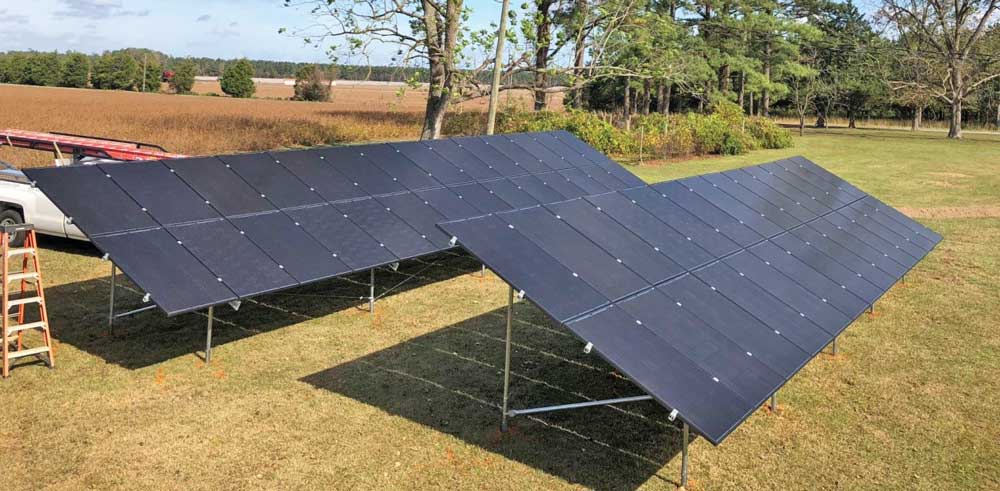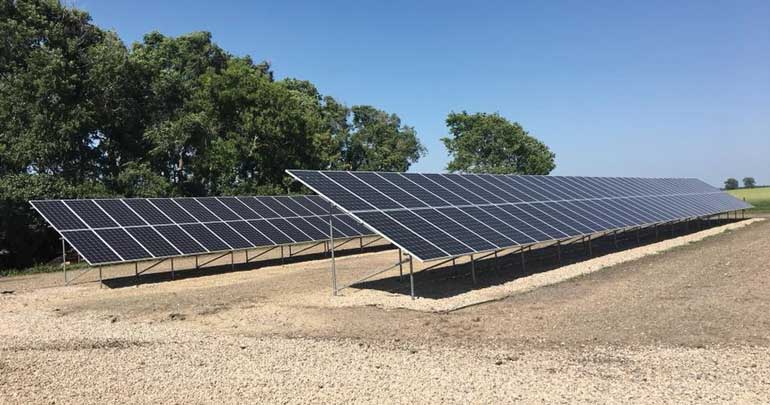
When does a ground-mount system work best? Many times, a roof mount is the only option due to space constraints, but when a bit of open land is available, putting a solar project on the ground provides some huge benefits to homeowners:
- Flexible design. While a roof is fixed at a tilt due to the structure of the building, a ground mount system provides flexibility, allowing you to set the best tilt for maximum energy output.
- Access. Being on the ground also allows easy access to repair, clean, troubleshoot and align the modules.
- Preserves the structure. Ground mount panels mean no alterations to the rooftop, and no need to remove the solar panels if the roof needs replaced or repaired.
- Efficiency. At times, a ground-mount system results in a cooler module temperature, which means higher energy output.

If you’ve decided ground mount is the way to go, here are a few considerations when designing your system:
Foundation: When choosing a ground-mount system, look for something that’s simple to install with a concrete-free foundation to minimize the impact on the land, such as a Pre-Engineered Kit from APA Solar Racking — a concrete-free solution to custom project sizes under 150 kW.
The land: Soil is also a key consideration to a solid ground mount system. APA offers foundation solutions for three soil types: rocky (Ground Screw); soft, organic soils (Helical); and non-penetrative soils (Geoballast).
Scale: A system like APA’s ground mount solution is also custom to any 2-panel increment, making it simple to scale. It comes with every part necessary for the racking and can install 10 kW in 4 hours with a skid steer and auger attachment.
Logan Pant is sales account manager at APA Solar Racking.
— Solar Builder magazine

Leave a Reply
You must be logged in to post a comment.